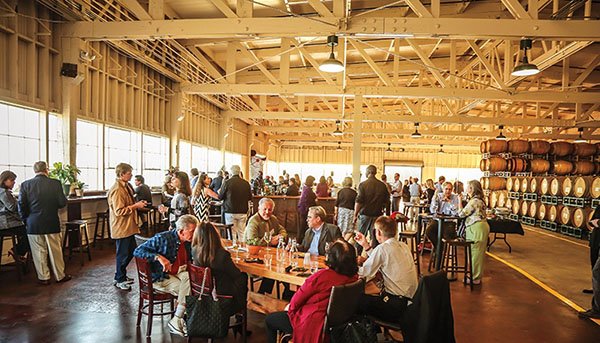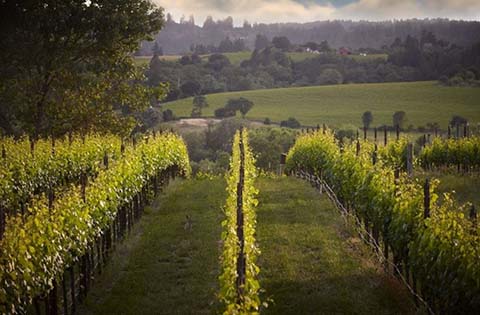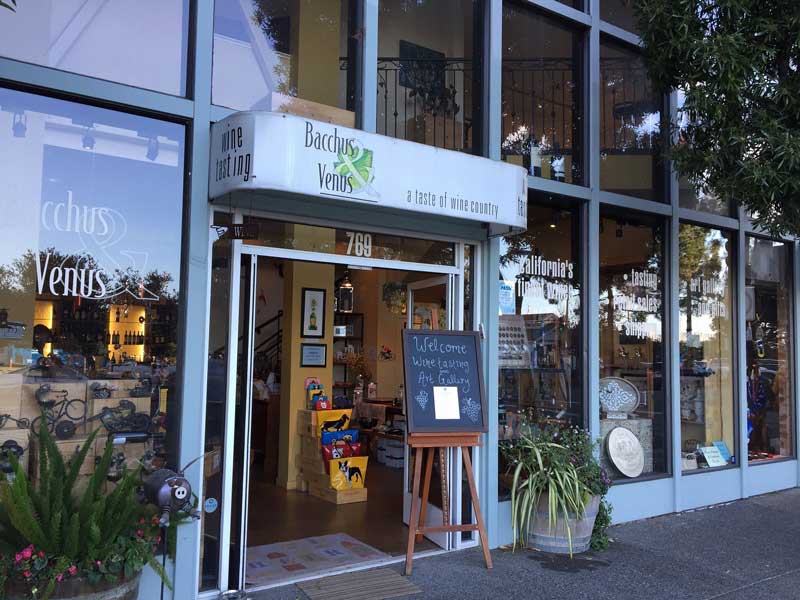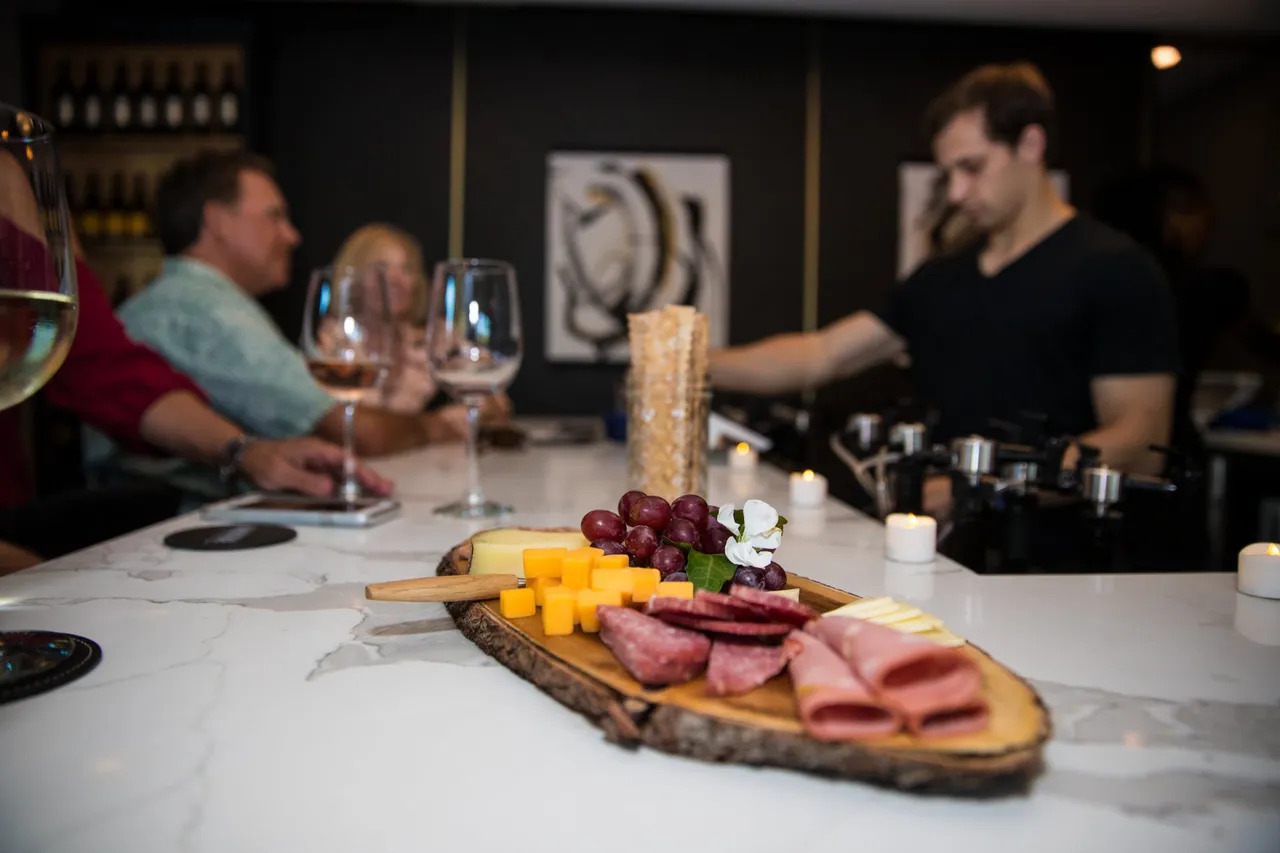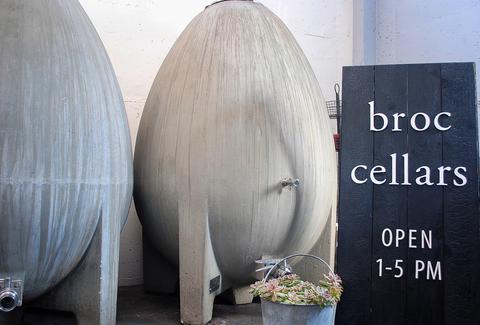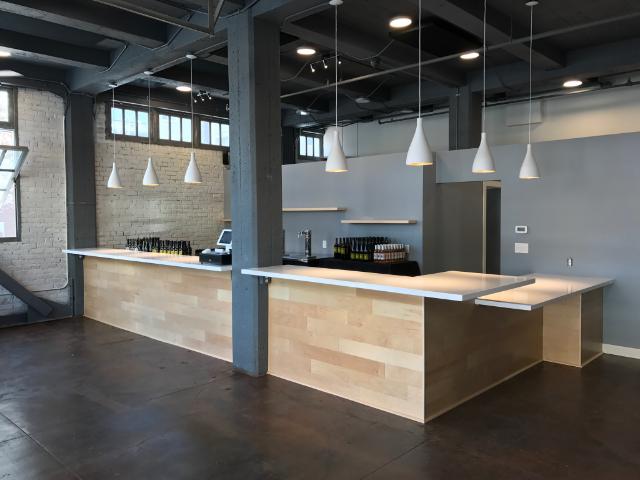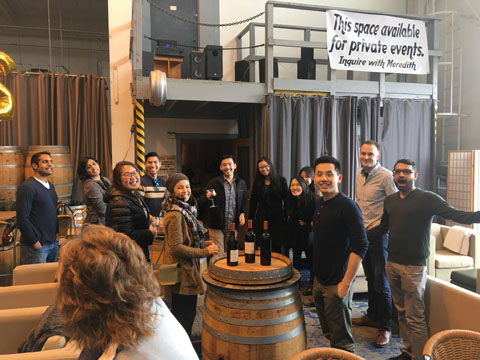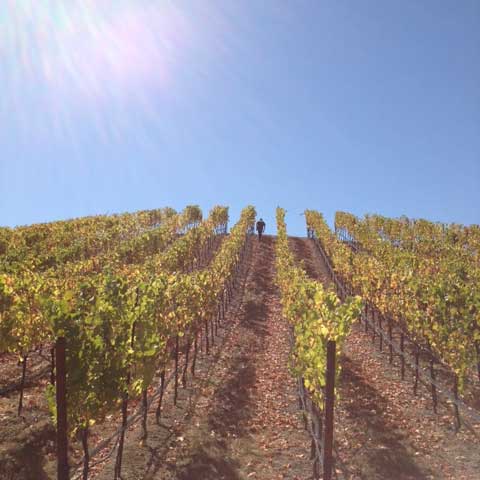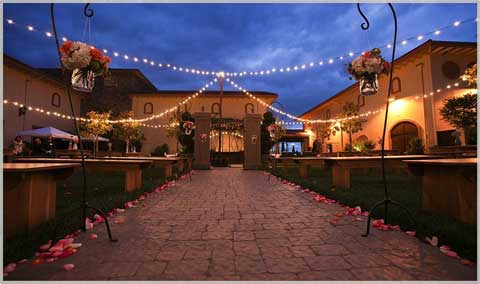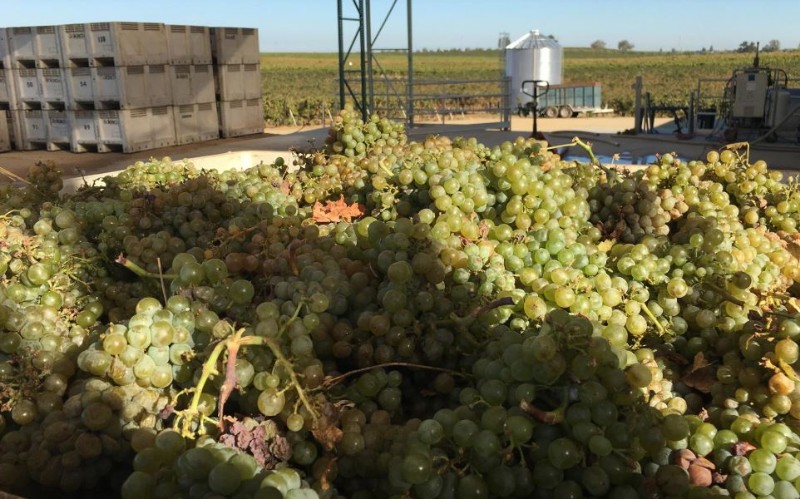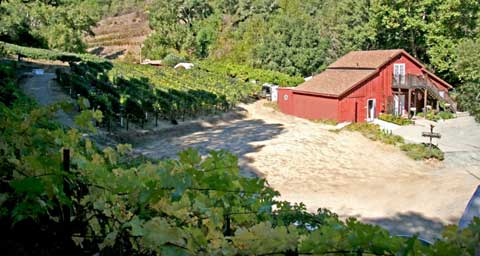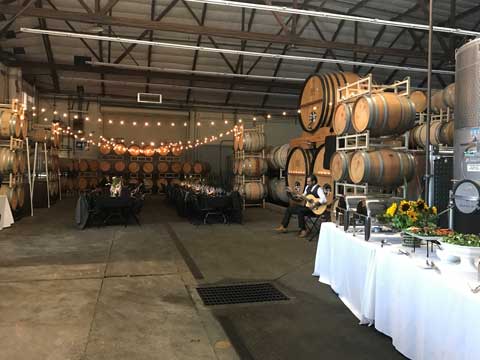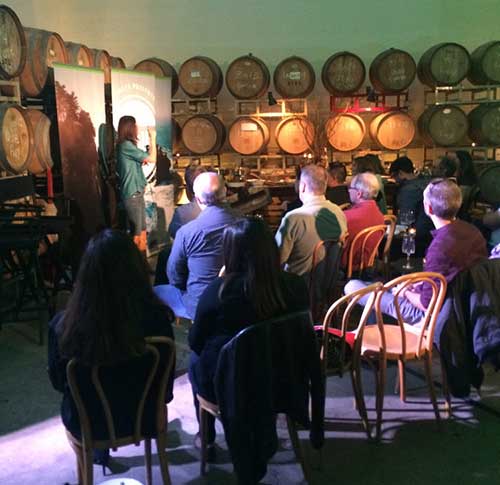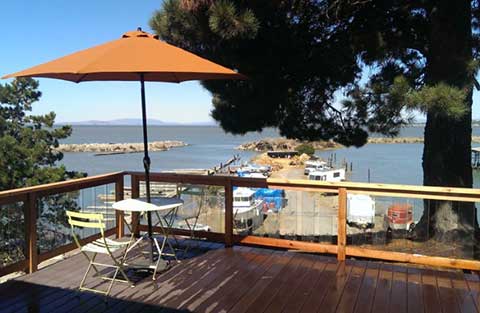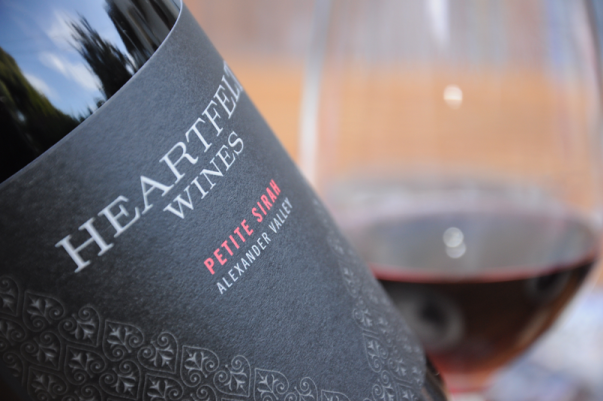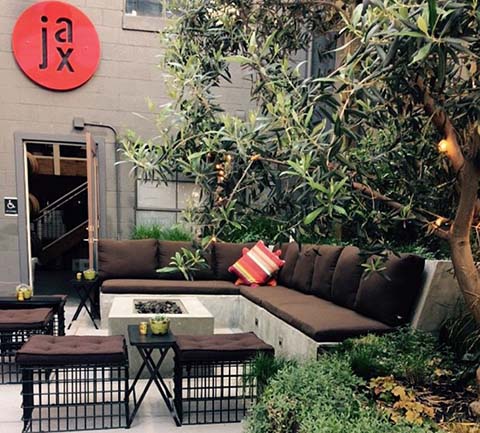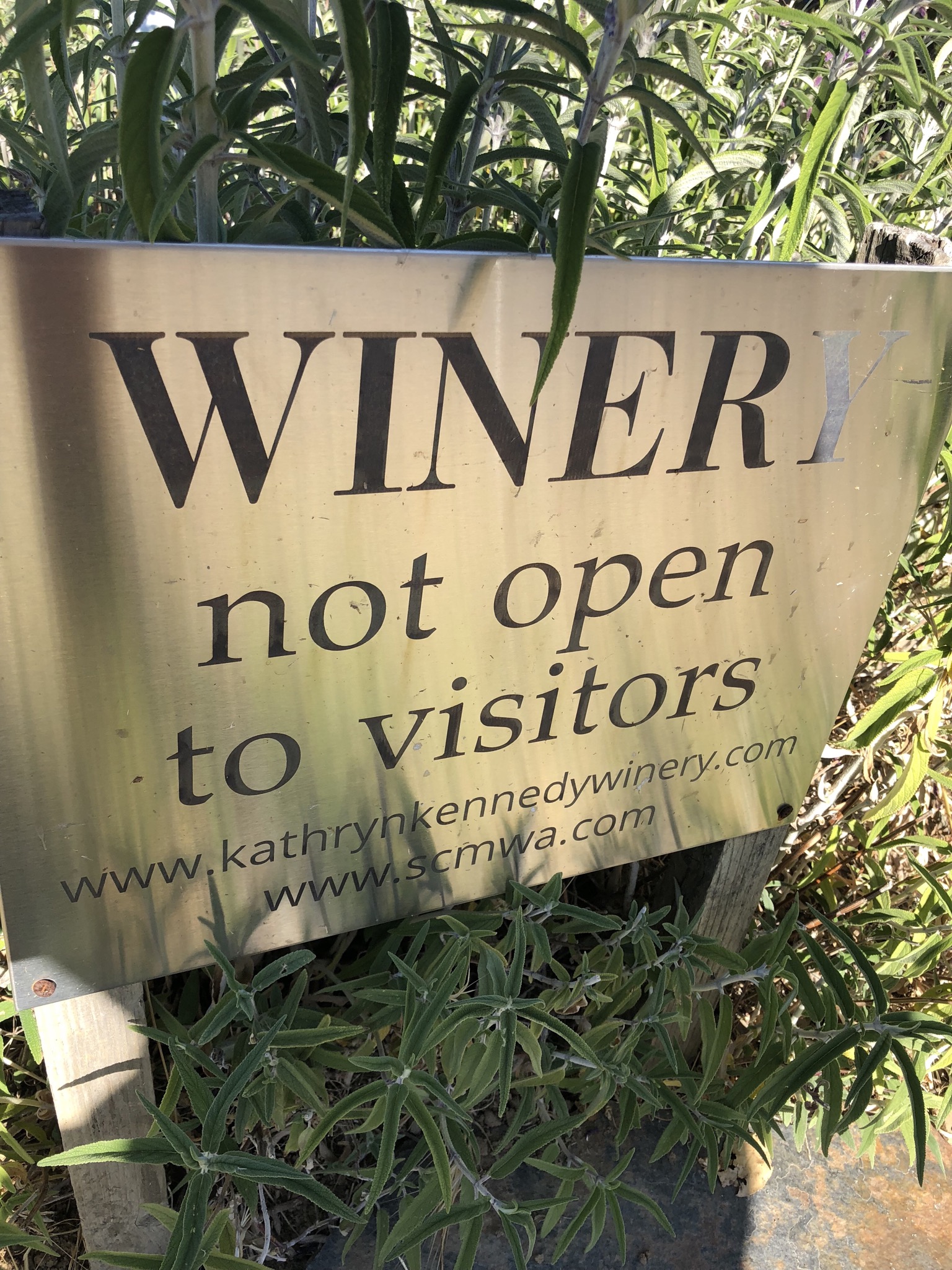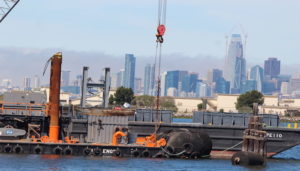Recommended Wineries
-
Winery Features - Check all that apply
San Francisco Bay Area Wine Tasting Articles
The Joy of Bay Area Urban Wineries
By Peter Cunningham
Urban Wineries in the Bay Area operate in converted warehouses, disused military installations, or dockside utility buildings. These sites are gritty, the visuals and the feel are engaging. The customer engagement includes San Francisco Bay with all its moods. In the bay area’s silvered sun light, rust-brown and orange are the dominant colors. In the dark of night, the dominant colors are the lights of the urban skylines, the lights of the bridges and the lights of the ferries on the water. During rains, water drips through the ceilings of the adjacent dry-docks. The surfaces decayed, discolored, and pitted by windswept salt-water spray. Disregarded dredges and tugs list in the shallows amongst creosote infused pilings. Shipping lanes traversed by ocean going cargo ships and tankers. These ships are large and cast shadows that darken the setting. Tugboats ferry back and forth, manned by stevedores wearing rain gear and life preservers. Sailboats and powerboats roll in the currents. The visuals are accented by the clatter of colossal ships loaded by leviathan cranes and the thud, clank and grind of container transports as they move. The smells are industrial and mechanical mixed with sea brine. The experience is new to most. The experience is compelling.An urban Winery’s industrial exterior envelops a tasteful interior with wine bar, good food, a wine tasting space and entertainment. The winemaker’s exposed tanks, barrels, pumps, macros, lifts and bottling lines, all are visible and can be toured. Customers love all this. In addition, several have both indoor and outdoor areas, including bay view patios.
Urban Wineries are “neighborhood wineries.” They are minutes away by car or public transport, and neighbors visit frequently, spontaneously or by plan. A wine bar, with lunch and dinner options and small plates, and optional wine tasting keep the crowds coming back. With this combination, customers enjoy lingering and immersing in the urban winery experience. Meals can be prepared in a kitchen on site, or in food trucks. Self-service food offerings are no problem. Rosenblum Winery added a selection of high quality charcuterie and other light food at their tasting room in Oakland’s Jack London Square. Rock Wall’s site has a kitchen and food trucks to meet the demand of the crowds, others have food trucks only. Groups, families and singles tell me regularly words to the effect, “what could be better than finishing a hectic day with a good meal and some good wine and a great view.” In other words, food and wine connect people to place.
Wine tastings are most appreciated when conducted in an area separate from the wine bar because the tasting curator needs the full attention of the audience. Urban Wineries are full of tales and history Customers revel in stories of management’s taming the industrial site to create the Urban Winery experience. What a great background for information on how the great wines are made.
Entertainment should include headliners and themed parties to attract crowds so people can mingle. Touring entertainers can be brought in to provide variety. Music, readings / poetry slams, art exhibits, comedy nights are all popular. Winery SF and Bluxome Street Winery are worth visiting to see the entertainment in action. An additional attraction is the availability of space to rent in the winery for events they host. People hosting parties say they like to introduce their friends to the winery, and share the experience. Rock Wall, and other venues, I know of enlist volunteers who help with Crush and Bottling. Working on the processes that create the wines they drink gives real satisfaction. At several smaller Urban Wineries, friends and family try their hand at making their own wines, typically about 25 to 50 cases.
These experiences contribute to the enjoyment, and attract and keep a crowd. Urban Wineries have broken the pattern of travel to Napa and Sonoma. Napa Tourism Board reports that 90% of the visitors at the wineries in Napa and Sonoma are Bay Area residents, and visitor numbers are down.
Recently I visited several wineries in Napa. Some are moving their tasting rooms to Napa city center from the countryside. The new tasting rooms are offering meals and entertainment, some offer hotel accommodation. This is in an effort to regain some customers who have adopted Urban Wineries as their destination of choice.
Bay Area Urban Wineries in the Bay Area that should become your go to destination include: Rock Wall Wine Company, R&B Cellars, Rosenblum Cellars, Urban Legend Cellars, Winery SF, Bluxome Street Winery, to name a few.
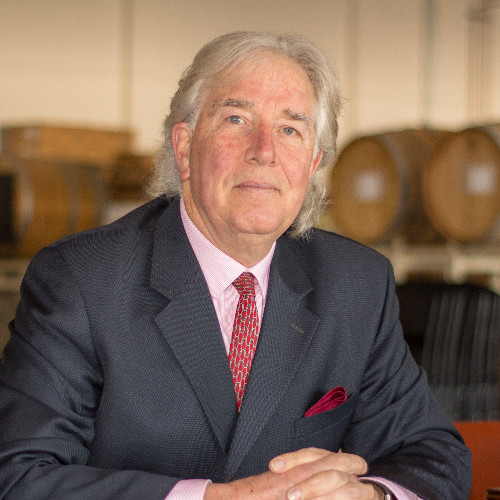
Peter Cunningham
LOCAL GUIDE
Peter Cunningham is a successful organizer and manager of Urban Winery Operations, Customer Experience Programs for Urban Wineries and Retail Customer experience in the San Francisco Bay Area.

